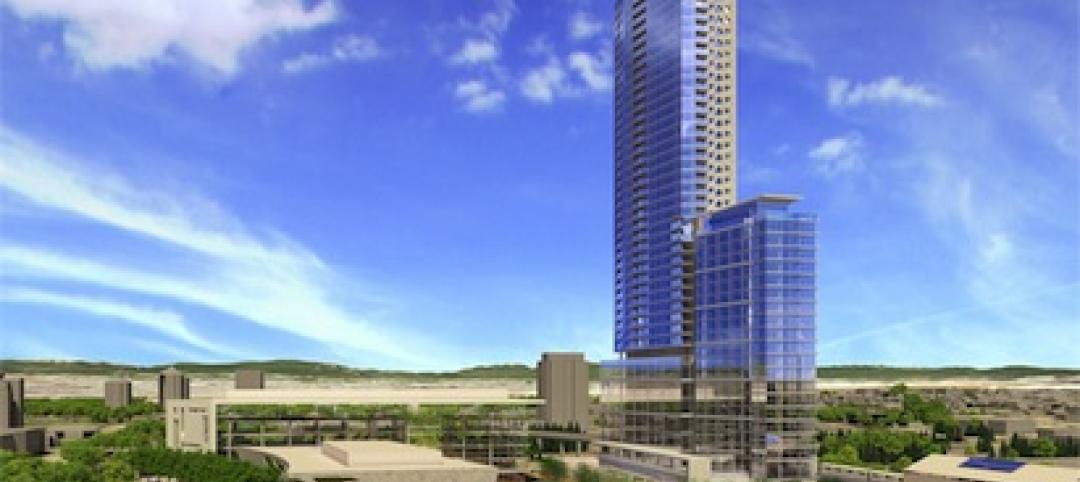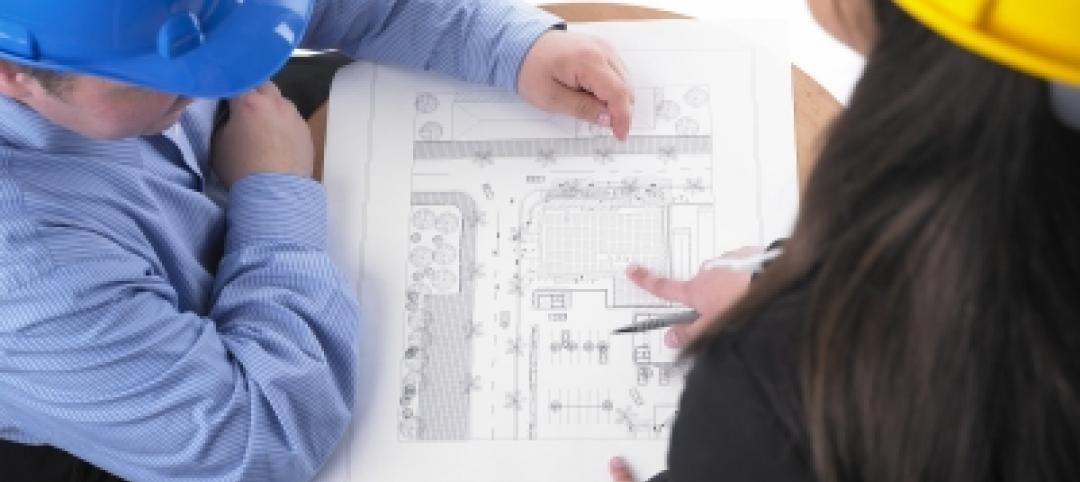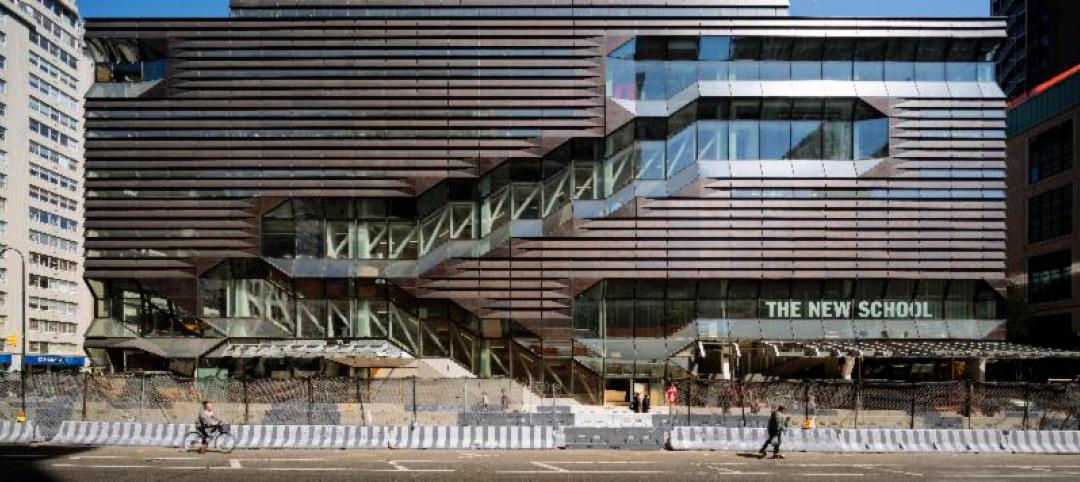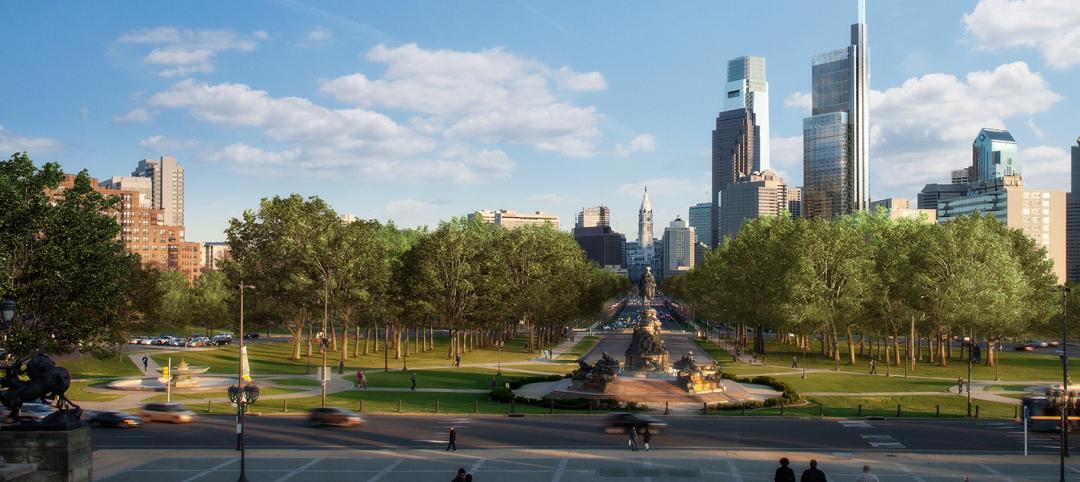Completed in 1932, the Potter County Courthouse is recognized as one of the most significant high-rise Art Deco courthouses in Texas, and among the most prominent in the country. Local architect W.C. Townes, of Townes, Lightfoot and Funk, designed the eight-story structure with a terra cotta fac?ade adorned in decorative figural and botanical bas-relief depicting the region’s cultural and natural history.
After more than 80 years of use, the courthouse was long overdue for an interior modernization and exterior restoration. The $15.5 million effort was undertaken as part of the Texas Historic Courthouse Preservation Program, a state-funded program that covered about one-third of the project’s cost. It included a complete fac?ade restoration—including repairing and re-anchoring damaged units and replacing mortar joints—and an overhaul of the interior spaces to meet current building and accessibility codes and the operational and functional needs of the county’s administrative offices and courts.
The original mechanical systems were replaced with a four-pipe scheme utilizing a 200-ton chiller and 250-ton cooling tower. An additional 60-ton, air-cooled chiller was placed on the roof, and 12 air-handling units were located on the various roofs at the fifth, sixth, and eighth floors. The new system, combined with automatic controls and enhanced thermal roof insulation, is expected to reduce energy costs by 20% annually.
POTTER COUNTY COURTHOUSE
Amarillo, TexasBuilding TeamSubmitting firm: JQ (structural engineer)Owner: Potter CountyArchitect: ArchiTexasMEP engineer: Johnson Consulting EngineersConstruction manager: Southwest General ContractorsGeneral contractor: Journeyman ConstructionGeneral InformationSize: 62,390 sfConstruction cost: $15.5 millionConstruction time: November 2009 to August 2012Delivery method: Design-bid-build
The Reconstruction Awards judges hailed the Building Team for its painstaking efforts in preserving the historical elements of the building while modernizing the structure. To accommodate the new mechanical systems and other modern amenities, such as fire/life safety systems, information technology infrastructure, and high-density shelving units, the team devised several creative structural solutions:
• Tunnel expansion. To preserve the courthouse’s original, first-floor terrazzo floors, the team utilized the facility’s underfloor utility tunnels to run new insulated piping. Deemed inadequate to handle the new systems, the existing tunnels had to be carefully reinforced and expanded. In total, more than 200 feet of concrete- and masonry-lined tunnel was added on to the existing layout, allowing for the terrazzo flooring to remain intact.
• Clay tile floor removal. The added weight of the rooftop mechanical units and high-density shelving meant that certain areas of the existing structure on floors two through six would need to be reinforced. However, because the plaster ceiling finish was applied directly to the original clay tile and reinforced concrete joist floor system, structural members could not be inserted below the original ceiling level.
The solution involved removing portions of the original clay tile forms to allow the installation of new steel beams constructed from steel T-sections between the existing concrete joists, thereby increasing the floor load capacity. The use of T-sections in lieu of standard wide-flange sections facilitated access for completion of field connections to the existing structure and the placement of non-shrink grout between the top of the steel members and the underside of the original floor slab to provide full load transfer.
• Use of CFRP strips. In order to accommodate new stairs, vertical chases, and mechanical infrastructure, numerous openings of various sizes had to be cut into the slab on floors seven and eight. The original floor structure on these levels is eight-inch reinforced concrete slabs spanning the concrete beams.
To maintain the structural integrity and continuity of the floor slabs, strips of laminated, 1?4-inch-thick carbon fiber reinforcement polymer (CFRP) were used to redistribute the loads adjacent to and around the openings. Larger openings for the stairs and chases called for additional reinforcement, and CFRP strips were placed on top or below the slab, corresponding to the tension zone of the slab system.
In several locations, strips were placed in both directions around the openings to properly distribute the load.
“We liked how the team carefully pre- served the clay-tile floor and the reinforced concrete slab with the strengthening schemes hidden out of sight,” said judge K. Nam Shiu, Senior VP, Director of Restoration Services, Walker Restoration Consultants (www.walkerrestoration.com). “They successfully provided up-to-date floor functionality while keeping the layout and look of the original building.”
The Building Team took careful measures to avoid disturbing the historical elements in the building. This included expanding an existing utility tunnel (above) and applying special structural reinforcement polymer to select concrete frame members (top). Photo: Brenda Bagot
Related Stories
| Jan 24, 2014
Urban Land Institute, Enterprise outline issues in rental housing shortage: Report
Bending the Cost Curve: Solutions to Expand the Supply of Affordable Rentals outlines factors that impede the development of affordable rental housing – causing the supply in many markets to fall far short of the demand.
| Jan 24, 2014
ZGF announces formal partnership with Vancouver's Cotter Architects
ZGF has announced the formal establishment of a Vancouver, British Columbia, presence in partnership with Cotter Architects.
| Jan 24, 2014
Structural concrete requirements under revision: ACI 318 standard
The American Concrete Institute (ACI), an organization whose mission is to develop and disseminate consensus-based knowledge on concrete and its uses, is finalizing a completely reorganized ACI 318-14: Building Code Requirements for Structural Concrete.
| Jan 23, 2014
SMPS Announces Call for Entries for 37th Annual Marketing Communications Awards Program
The Society for Marketing Professional Services (SMPS) is accepting entries for its 37th Annual Marketing Communications Awards (MCA) competition. The MCA program is the longest-standing, most prestigious awards program recognizing excellence in marketing communications by professional services firms in the design and building industry. The entry deadline is March 3, 2014. SMPS members and nonmembers are eligible to enter.
| Jan 23, 2014
Adrian Smith + Gordon Gill-designed Federation of Korean Industries tower opens in Seoul [slideshow]
The 50-story tower features a unique, angled building-integrated photovoltaic (BIPV) exterior designed to maximize the amount of energy collected.
| Jan 23, 2014
Think you can recognize a metal building from the outside?
What looks like brick, stucco or wood on the outside could actually be a metal building. Metal is no longer easily detectable. It’s gotten sneakier visually. And a great example of that is the Madison Square retail center in Norman, Okla.
| Jan 23, 2014
3 fatal flaws your architecture firm has right now
After visiting over 200 architecture firms, I was aghast that so many of them were committing these costly sins of mismanagement and miscommunication, without even realizing it. If I can stop even one more firm from shooting its own foot, then this is worth it.
| Jan 22, 2014
SOM-designed University Center uses 'sky quads,' stacked staircases to promote chance encounters
The New School's vertical campus in Manhattan houses multiple functions, including labs, design studios, a library, and student residences, in a 16-story building.
| Jan 22, 2014
Architecture Billings Index sees first back-to-back decline since mid-2012
The AIA's Architecture Billings Index dipped for the second consecutive month in December—the first consecutive months of contraction since May and June of 2012.
| Jan 21, 2014
Comcast to build second Philadelphia skyscraper, with Norman Foster-designed tower [slideshow]
The British architect last week unveiled his scheme for the $1.2 billion, 59-story Comcast Innovation and Technology Center, planned adjacent to the Comcast Center.

















